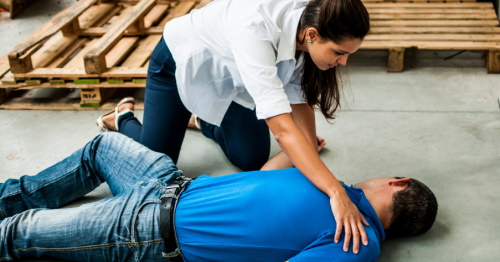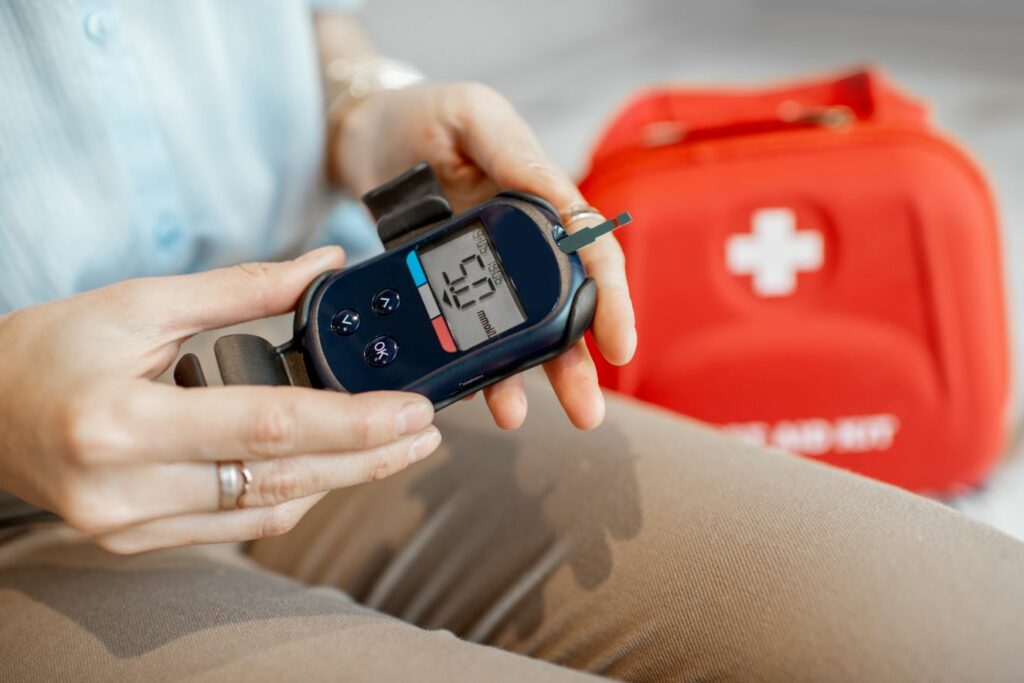Introduction
In the globe of emergency medical action, the capacity to act quickly and properly can imply the distinction between life and fatality. One of the most critical tools in this world is the Automated External Defibrillator (AED). Public recognition on defibrillator usage is essential, as it equips individuals to do something about it during heart emergency situations. This short article will certainly discover various facets of AEDs, consisting of standard vs innovative life assistance, healthcare facility codes and methods, and the relevance of public defibrillator usage. Let's explore exactly how we can make a distinction with education and learning and preparedness.
Public Recognition on Defibrillator Use: Making a Difference
Understanding how to make use of a defibrillator can be a game-changer in an emergency situation. Yearly, thousands die from abrupt heart attack (SCA), yet with proper training and awareness, many lives might be conserved.
What is an AED?
An Automated External Defibrillator (AED) is a portable gadget that can evaluate the heart's rhythm and supply an electric shock if necessary. This shock can aid re-establish an efficient rhythm in situations of SCA.
Why Public Awareness Matters
- Increased Survival Rates: Research studies reveal that immediate use of an AED can considerably increase survival rates. Empowerment: Expertise reduces concern; understanding exactly how to make use of these tools equips bystanders to act. Community Preparedness: Communities that are enlightened regarding AEDs create safer environments.
Basic vs Advanced Life Assistance: A Relative Overview
When discussing defibrillation, it's vital to distinguish in between basic life support (BLS) and progressed life support (ALS).
Basic Life Support (BLS)
BLS refers to the initial actions taken by nonprofessionals or very first -responders in instance of a heart attack:
- Checking responsiveness Identifying no breathing Performing CPR
BLS concentrates on preserving blood flow up until sophisticated clinical aid arrives.
Advanced Life Assistance (ALS)
ALS entails extra intricate interventions usually performed by qualified specialists:
- Administration of medications Advanced respiratory tract management Use of innovative tracking equipment
While BLS is important in the early moments adhering to cardiac arrest, ALS takes over as soon as trained employees arrive.
Steps for Utilizing an AED Safely
Call Emergency situation Services: Prior to making use of an AED, ensure that emergency solutions have actually been contacted. Check Responsiveness: Delicately touch the person and yell to see if they respond. Identify No Breathing: Seek upper body increase or pay attention for breath sounds. Retrieve the AED: Get the nearest AED while evaluating the casualty. Turn On the AED: Comply with voice motivates as you attach pads to the chest. Stand Clear: Guarantee everybody is far from the patient while examining heart rhythms. Deliver Shock If Advised: If prompted by the gadget, press the shock button.Maintaining Calmness During Emergencies
It's crucial for spectators to remain calm during emergency situations. Keeping calmness not only helps you believe plainly yet also urges others around you to do so as well.
Hospital Codes and Protocols
Once emergency solutions get here, they comply with established healthcare facility codes and protocols:
Common Healthcare facility Codes Related to Heart Arrest
|Code|Description|| ------|------------------------------|| Blue|Cardiac Arrest|| Red|Fire Emergency|| Yellow|Internal Emergency|
These codes simplify communication among healthcare providers so they can respond swiftly.
Protocols Adhering to AED Use
After using an AED:
- Document information regarding its usage Hand over any details gathered from your assessment Stay offered for additional wondering about by clinical professionals
Public Defibrillator Use: Enhancing Accessibility
The positioning of public gain access to defibrillators is key in boosting community safety and security:
Where Are They Located?
Public accessibility professional First Aid training providers Wollongong defibrillators are generally found in:
- Shopping malls Airports Schools
Awareness campaigns ought to inform people about their locations.
Why Neighborhood Training Is Essential
Training sessions need to be arranged consistently to guarantee community members recognize exactly how to operate these tools effectively.
Statistics That Matter
Studies reveal neighborhoods with widespread accessibility to AEDs substantially reduce death rates connected with unexpected cardiac arrest.
Importance of BLS Accreditation in Communities
Obtaining BLS accreditation boosts area resilience against cardiac emergencies:
Benefits of BLS Certification
Increased probability of prompt response during emergencies Enhanced understanding of basic lifesaving techniques Improved self-confidence amongst neighborhood membersMany organizations supply BLS certification courses, making it easily accessible for every person curious about learning lifesaving skills.
Identifying No Breathing: Secret Indicators
Recognizing when a person isn't breathing can save valuable time:
Signs Indicating No Breathing
Absence of breast rise or fall No audible breath seems Cyanosis or blue coloring around lips or fingertipsUnderstanding these indications allows quicker activity when secs count.
Taking Switches on Compressions Throughout CPR
Effective mouth-to-mouth resuscitation calls for endurance; thus taking turns is a good idea:
How Commonly Needs to You Switch?
Compression cycles need to preferably last no longer than two mins before switching over rescuers-- this helps keep quality compressions without tiredness setting in.
Strategies for Efficient Teamwork
Using spoken signs like "changing" can assist assist in smooth changes without shedding rhythm.

Compression Depth and Price Considerations
Proper compression depth and price are critical for effective mouth-to-mouth resuscitation:
Recommended Compression Depth
For grownups:
- Compress at the very least 2 inches deep yet not going beyond 2.4 inches
For youngsters:
- Compress approximately 1/3 deepness of their chest
Optimal Compression Rate
Aim for a rate of 100-- 120 compressions per minute-- this aligns with maintaining appropriate blood flow during CPR efforts.
FAQ Section
1. What must I do if I discover a person unresponsive?
Call emergency situation services instantly while checking their responsiveness and breathing prior to initiating CPR if necessary.
2. Exactly how do I know if I need to utilize an AED?
If a person is unresponsive and not breathing normally, using an AED may be important; transform it on after requiring help.
3. Can any person make use of an AED?
Yes! Most public gain access to AEDs are designed for layman use; they provide detailed instructions with voice prompts.

4. What happens if I offer a shock when it's not needed?
Modern AEDs just advise shocks when necessary; supplying unnecessary shocks seldom positions damage yet may delay treatment if done exceedingly without expert intervention.
5. Exactly how often should neighborhood members rejuvenate their CPR skills?
It's normally advised every two years; refresher courses guarantee your abilities stay up-to-date as standards develop over time!
6. Are there legal defenses permanently Samaritans who aid throughout emergencies?
Yes! Several jurisdictions have Good Samaritan laws protecting people that supply help CPR Courses Wollongong throughout emergency situations from liability as long as their activities are practical under circumstances!
Conclusion
Public awareness on defibrillator usage is not simply valuable-- it's crucial in conserving lives during cardiac emergency situations! By furnishing communities with expertise on standard vs innovative life assistance strategies, identifying signs such as no breathing, keeping calmness under pressure, and ensuring availability via public defibrillator placements, we produce more secure atmospheres where individuals feel empowered to act decisively when every second counts!
Investing time right into learning about these crucial tools will definitely lead us towards making meaningful distinctions within our areas-- due to the fact that every heartbeat matters!